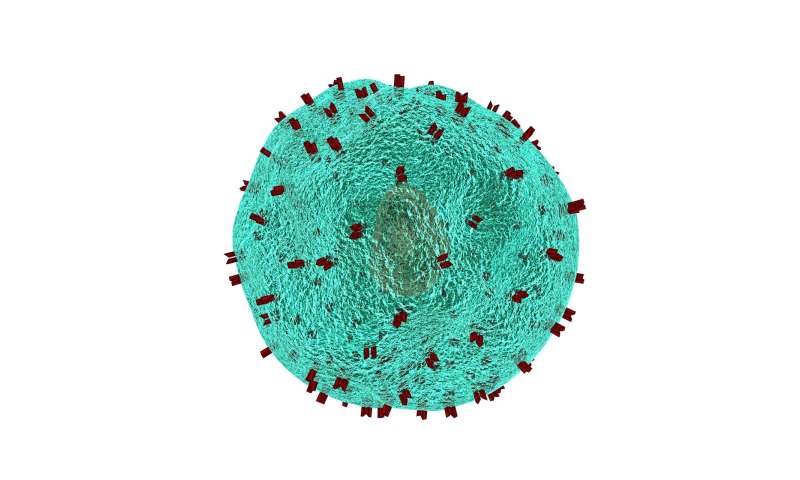
T cells play a key role in the human immune system. They are capable of distinguishing diseased or foreign tissue from the body’s own, healthy tissue with great accuracy; they are capable of triggering the actions necessary to fight off the troublemakers. The details of this immune response are manifold and the individual steps are not yet fully understood.
Scientists of the universities of Würzburg and Mainz have now figured out new details of these processes, showing that tiny point mutations in a gene can modify T cells to be less aggressive. This could be an advantage after stem cell transplantation which includes T-cell transfusion in order to keep a number of severe side effects in check. The researchers have now published the results of their study in the Journal of Experimental Medicine. The study is led by Dr. Friederike Berberich-Siebelt, head of the “Molecular and cellular immunology” research group at the Institute of Pathology of the University of Würzburg.
A protein family with multiple tasks
When T cells detect foreign or altered tissue, such as an infected or tumor tissue, this usually happens through the receptors on their cell surface. These T-cell receptors then send signals into the cell interior, initiating a response. In a first step, they activate a special family of transcription factors—scientifically called NFAT for nuclear factor of activated T-cells. The NFATs then bind to the DNA in the cell nucleus and trigger also the production of cytokines such as interleukin-2.
NFAT is composed of many family members which may have overlapping tasks or assume completely different functions. But that’s not all: Like many other proteins in the cell, they can still be modified after their synthesis to customize their function. The recently published study focuses on one specific modification of the NFATc1 “family member” which is called sumoylation.
Advantageous point mutations
“Sumoylation plays a role in different cellular processes such as nuclear transport, programmed cell death or as an antiviral mechanism,” Friederike Berberich-Siebelt explains. Sumoylation defects have also been observed in various diseases such as cancer and herpesvirus infections.
In the study now published, the scientists worked with laboratory animals that had two actually insignificant point mutations in the NFATc1 gene which, however, prevent sumoylation. This is not necessarily a disadvantage: “The offspring of these animals is perfectly healthy. The modified NFATc1 even mediates specific signals that reduce the clinical symptoms of multiple sclerosis at least in the animal model,” Berberich-Siebelt explains. When using T cells that carry these mutations in stem cell transplantation, they are much less aggressive against the tissues of the host animals than “normal” cells.
Fascinating fundamental research
This effect is due to an increase in interleukin-2 at the beginning of the immune response at the biomolecular level. Interleukin-2 counteracts the differentiation into inflammatory T-cell subtypes and at the same time supports so-called regulatory T cells according to the authors of the study. It is quite possible that this discovery will have consequences for future stem cell transplantation which includes T-cell infusion. When using T cells in which NFATc1 is not sumoylated, this might prevent severe side effects, making the point mutation “a small modification with a big impact” according to Berberich-Siebelt.
To investigate this in more detail, Berberich-Siebelt and her team will continue to research the possibilities of therapeutic implementation within the framework of the Collaborative Research Center/Transregio “Control of graft-versus-host and graft-versus-leukemia immune responses after allogeneic stem cell transplantation” funded by the German Research Foundation (DFG). “We want to find out whether CRISPR/Cas9 gene editing can be applied to human T cells to exhibit just the right amount of activity during hematopoietic stem cell transplantation,” the scientist says.
Source: Read Full Article






